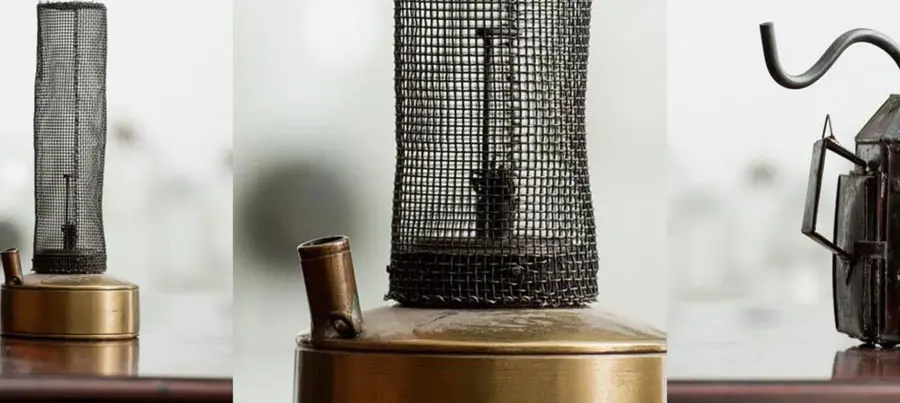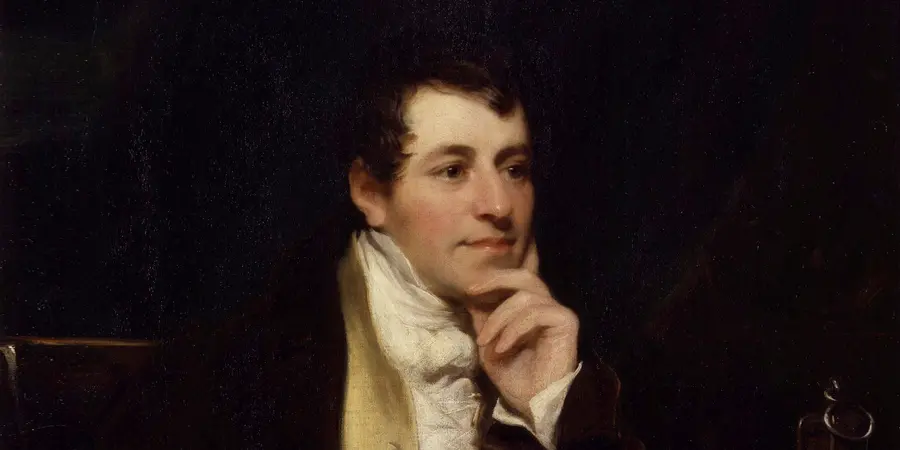Humphry Davy was a chemist and the first Director of the Laboratory here at the Royal Institution, taking up the post in 1801. He was central to establishing the Ri as both a popular venue for lectures and an active site of scientific research, two elements which remain central to our work today. But beyond his position here, Davy was well-known for his invention of the miners’ safety lamp, popularly known as the Davy lamp, which saved thousands of lives by tackling a serious problem which frequently placed those working in coal mines in extreme danger: firedamp.

Firedamp is a term for flammable gases (commonly methane) found in mines. The gases would leak from coal-bearing rocks and spread to the areas where miners worked. In the early days of coal mining, open flames, usually in the form of candles, were the only way for miners to bring light down beneath the ground, and when these flames came into contact with the methane in the air the result was disastrous. As methane is highly flammable, even the small candle flames were enough to ignite it and cause sudden plumes of fire to spread through the air. In the enclosed mines, it was very difficult for the miners to avoid these, and so firedamp claimed many lives and caused severe injuries.

In 1815, Humphry Davy set to work at the Ri to try to find a solution to this deadly problem. He worked quickly, going through several iterations and prototypes of the eventual Davy lamp (several of which we still have at the Ri) in only a couple of months. Davy was dedicated to this task both because of the immediate danger to lives for those working in the mines and because firedamp had begun to attract attention amongst several scientists who were all racing to find a solution.
The final version of Davy’s miners’ safety lamp was an elegant and relatively simple solution to the problem: an oil lamp with a wick enclosed in a cylinder of metal gauze. Whilst light from the lamp is able to pass through the gauze, allowing the miners to find their way around in the depths of the coal mines, fire cannot. With the Davy lamp, if miners encountered firedamp the methane would still catch light, but the flame would be safely contained within the metal gauze.

So how does the Davy lamp work? Davy’s essential discovery was that flames can’t propagate through the small holes in the metal gauze – and he spent time experimenting with tiny metal tubes and different sized gauzes before he found the right sized hole to be used in the final version of his lamp. Using metal was also key, as the wires absorb the heat from the flame and cool it down. A high temperature is required for a fire to burn. Normally, once the flame has been ignited the necessary heat is provided by the chemical reaction of the fire itself, allowing it to self-sustain until the fuel is exhausted. When a flame meets the metal gauze of a Davy lamp, however, the flame is cooled to the point of being extinguished – but only where it makes contact with the gauze. Therefore, the flames of the Davy lamps were contained within their protective circles, even when brought into contact with firedamp, but they continued to burn bright within the gauze so the miners were not left in darkness.
Davy’s invention allowed open flames to be taken into mines without the risk of the sudden, destructive ignition of firedamp. This massively improved the safety of miners’ work, and also led to deeper exploration into the coal mines and increased production. It is an excellent example of how science can be used practically in society to improve, and even save, lives, by applying scientific knowledge and research to a real-life problem.
See it in person
In our free museum at the Royal Institution, you'll find several versions of the miners' safety lamp, as well as dozens more items that belonged to Davy and others who worked in this historical building, like Michael Faraday and John Tyndall.
